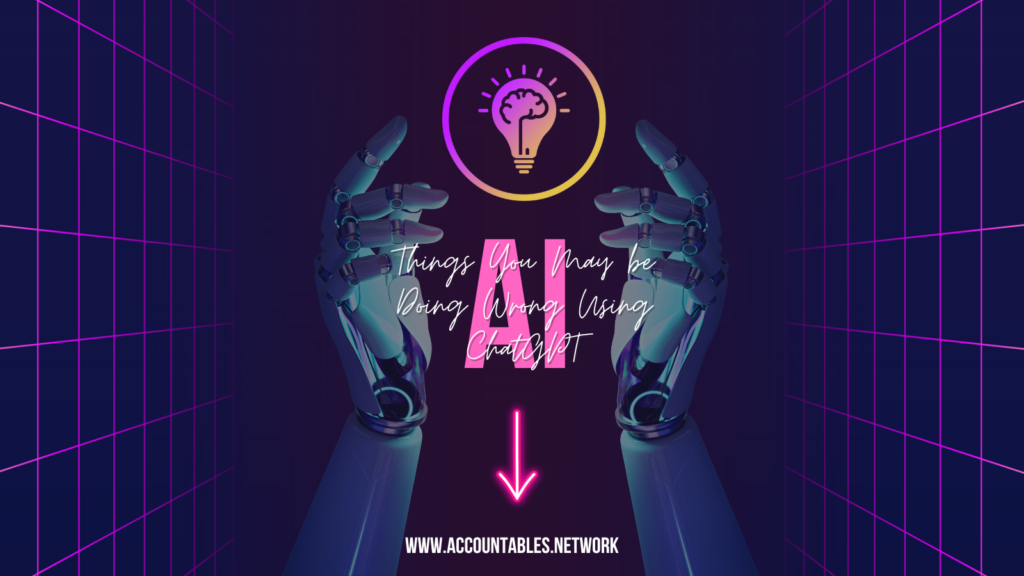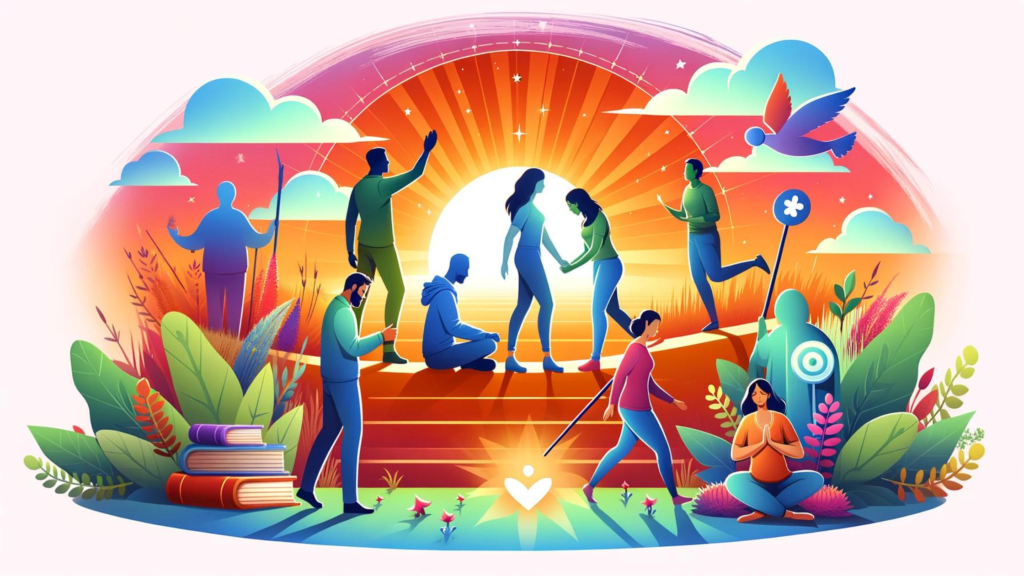Things You May be Doing Wrong Using ChatGPT

ChatGPT mistakes you’re making and how to fix them
Open AI’s ChatGPT is quickly becoming a significant part of people’s lives — it’s a big part of mine. But whenever someone tells me they tried using ChatGPT and didn’t see the appeal, I usually follow up by asking them what they’ve tried using it for. Inevitably, their answer reveals why they aren’t getting the results they want.
Since this chatbot is a relatively new AI technology with new learning techniques, people make many common mistakes. If you need help to make it work for you, you might also make some mistakes.
ChatGPT mistake #1: You’re trying to get facts
The most common mistake I see people making when new to ChatGPT is asking it to generate factual information. One person told me they were using ChatGPT for book suggestions — and gave up on ChatGPT when they couldn’t find any on Amazon.
They shouldn’t have been surprised by ChatGPT’s failure at the task, though. While artificial intelligence can provide some exciting ideas, ChatGPT should be something other than your source of factual information. It’s an AI large language model (LLM), not an encyclopedia. Its knowledge is limited to its training data, which might be outdated or incorrect, and it sometimes suffers from hallucinations where it fabricates entirely fictional information and presents it with great conviction — like making up titles and authors of books.
Instead, use ChatGPT for brainstorming and inspiration, and rely on traditional research methods for factual information. For instance, if you’re looking for the most recent bestsellers or critically acclaimed books in a particular genre, searching for reliable sources like book reviews, award lists, or curated recommendations from trusted experts is better.
Try this instead: Use ChatGPT for ideas, inspiration, and remixing existing information. For facts, you’ll still need to research the old-fashioned way.
ChatGPT mistake #2: You’re giving up too soon
I’ve seen people get frustrated with ChatGPT after just one or two attempts, but it’s important to remember that prompt engineering is an art that takes practice.
If you’re not getting the desired results, don’t assume your task can’t be done. Instead, rewording your prompt, simplifying the language, or adding more context to help guide how ChatGPT responds. You might be surprised by how much a slight tweak to your prompt can change the quality of the generated content.
If you need help, you can often find good examples of ChatGPT prompts that others have used and tailor those to your needs. Or, ask ChatGPT itself for help! It does a reasonably good job of coaching you.
Try this instead: Reword your prompt. You can try simplifying the language or adding more context.
ChatGPT mistake #3: You’re using the generic tone
ChatGPT often sounds like, well, ChatGPT. Its default tone might differ from what you want, primarily if you aim for a more distinct or personalized style. However, the good news is that ChatGPT can be guided to adopt different tones and techniques based on your input.
Instead of settling for the default tone, specify the style or describe a character you want ChatGPT to emulate. For the tone, you can use adjectives like “playful,” “formal,” or “casual,” or better yet, give some examples to work from. You can also ask ChatGPT to write like someone else, either a character you describe or the name of someone ChatGPT would know from its training set. I’ve even used my bio and writing to get ChatGPT to write more like me.
You’ll still need to edit the results, but by investing time upfront, you can reduce the editing time required to add your distinctive tone to the output.
Try this instead: Describe the tone you want using adjectives or by specifying a character that ChatGPT should emulate — maybe even yourself.
You can ask ChatGPT to regenerate its response in any tone you want.
ChatGPT mistake #4: You haven’t developed your point of view
One common complaint is that ChatGPT’s output is dull. To make it more insightful, you need to give ChatGPT specifics on what you want it to write. In other words: it requires a point of view.
My workflow looks like this: I develop my outline for the content I want to create. Then I spent some time brainstorming with ChatGPT about things I could add. I evaluate the ideas and decide whether they’re compelling enough to include in the outline. This method works better than asking ChatGPT to write an outline and then editing it to fit what I want.
That’s the method I used for this article. ChatGPT’s suggestions were much different than my ideas — no surprise since my outline came from conversations I’ve had with people. But I did include one of its suggestions I hadn’t considered.
Try this instead: First, use your squishy human brain instead of a mechanical one. You’ll need to decide on the main points you want to make. Only then should you start brainstorming with ChatGPT to think your topics through and to get suggestions for things you might have yet to consider.
ChatGPT mistake #5: You didn’t give enough context
It’s tempting to dash off a short prompt and see what comes out, but generally, the more information you can provide to ChatGPT, the better. The time you take on the front end to think through your request will pay off with a better response.
When crafting your prompt, aim to offer as much information as possible about the context. This could include background details, specific examples, or stylistic preferences. That way, by providing a richer context, you’re equipping ChatGPT with the necessary tools to tailor its response to your needs. At the end of the day, a well-crafted prompt is the foundation of a successful ChatGPT interaction — and making one takes some time to get right.
Try this instead: Offer as much relevant information as possible when crafting your prompt to help ChatGPT understand your requirements.
ChatGPT mistake #6: You mix your topics or tasks
I often come to ChatGPT with a handful of tasks I want to get done, like drafting an email or two and generating ideas for what to make for dinner this week. Although it’s tempting to prompt all of those tasks in one chat window, having multiple functions in the same thread can worsen the generated results’ quality.
ChatGPT remembers the context from your previous prompts, so it’s better to separate the sessions by topic as much as possible to maintain focus. As an added bonus, organizing your generated content is easier because it’s already divided into different threads.
Try this instead: Separate your sessions by topic or task to get more focused and accurate responses.
ChatGPT mistake #7: Your session is too long
When I first started using ChatGPT, I was caught in lengthy sessions, partially because I was new to chat-based prompting and wasn’t getting the desired output beginner-level prompting caused more problems than I realized. Eventually, ChatGPT would need to remember the previous information I provided, and I had to re-insert it into the prompt, leading to worsening results.
Instead, it would have been better if I had restarted the conversation when things got muddy. It’s better to focus on one aspect of your project and start a new session when things get lengthy or when experimenting with a unique prompt style. This ensures that ChatGPT maintains the necessary context and provides accurate results.
Try this instead: Break your session into smaller components and use separate chat windows for each part of your project. Restart in a new window if your prompts give you bad results or if you have to repeat your prompt too many times.
ChatGPT mistake #8: You take the first output
I’m often surprised at how quickly some people give up on ChatGPT. They might try one or two things and then give up, believing that the AI can’t provide what they want. Most of the time, you’ll need to put in some effort by adjusting the results with a targeted follow-up prompt, suggesting changes and edits to the output, or asking ChatGPT to refine its first response based on additional parameters.
Instead of settling for the first output, try regenerating the response or prompting ChatGPT to tweak the previous production to systematically improve the results.
Remember that ChatGPT’s output has a random element, so if you think the prompt is good, you can ask ChatGPT to generate a different response. This gives the AI another chance to develop something closer to what you seek.
Try this instead: Regenerate the response or request tweaks to the output to improve the results.
ChatGPT mistake #9: You’re being too polite
When I was debugging code with ChatGPT, I encountered a situation where I could see the error in the code it generated, but ChatGPT struggled to identify the issue. When prompted to get ChatGPT to fix the code, I worded my request like I would talk to a junior developer: “Do you think the line where we’re defining the variable could be an issue?” To my surprise, ChatGPT said no! It then tried to fix a different line (for the fourth time). Spoiler: The original line was the issue.
The problem was that I defaulted on how I would coach a person by suggesting where to look for the issue rather than directly telling them what to do. A colleague would catch my polite wording (the line I identified is the issue!), but the nuance was lost on ChatGPT.
Instead, try being clear and direct about what you want ChatGPT to do. Remember that the AI is a tool, not a person, and it doesn’t have feelings that can be hurt by direct language. (Don’t get too used to it and start being rude to your colleagues.)
Try this instead: Be clear and direct about what you want ChatGPT to do without worrying about manners.
ChatGPT mistake #10: You’re not checking the answers
It’s tempting to save time by copying and pasting whatever ChatGPT generates for you, but it’s also a super-fast way to make significant mistakes. ChatGPT is a potent tool, but it’s not infallible. It can sometimes provide outdated, incorrect, irrelevant, or nonsensical information.
Before using the generated content, take a moment to review and verify the answers or suggestions provided by ChatGPT. Cross-checking the information with reliable sources and using your judgment will help you avoid errors and ensure the content is accurate and relevant. It’s an extra step, but it lets you use ChatGPT’s output confidently, knowing that it meets your expectations and it’s free from any glaring mistakes. A little vigilance goes a long way in getting the most out of your AI assistant.
Try this instead: Always double-check the generated content for accuracy and relevance before using it in your work.
Mastering ChatGPT is all about patience, persistence, and playing around with your prompts. It’s a powerful tool, but it could be better, and it’s up to you to fine-tune its output.
Remember to give enough context, be direct, separate sessions by topic, and double-check the results. Doing this enhances the quality of ChatGPT’s responses and, ultimately, your work.
If you would like to learn more about our upcoming events, please visit us at www.bcolburn.com




